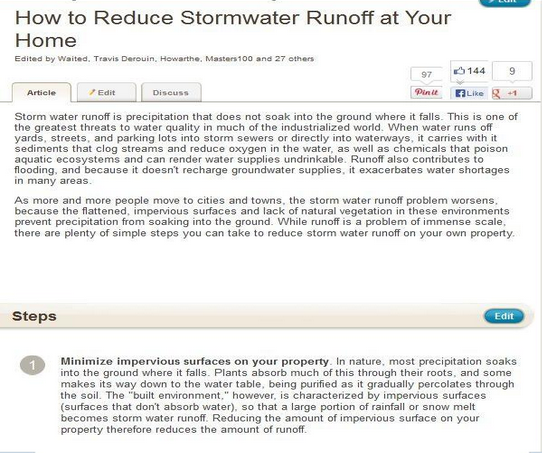In essence, stormwater runoff refers to the water that does not soak into the ground that it falls on, thus collecting on the surface to the point of flooding low areas of your house such as your basement. Aside from contributing to rot and damage of most surfaces, it becomes much more of a threat as runoff could carry destructive sediments and chemicals. To apply efficient stormwater BMP or best management practice at home, you should know how to reduce stormwater runoff in your house through the following ways:

Minimize Impervious Surfaces
Since runoff is basically the water not being absorbed into the ground, one of the best ways to prevent pools of water around your property is to avoid having impervious surfaces in the first place. As WikiHow.com advises:
Replace concrete or asphalt slabs with pavers. You can use paving stones or bricks for patios, walkways, and driveways. Water can seep down into the spaces between the individual pavers, thus reducing the amount of runoff.
Use the Water
Instead of simply letting the stormwater pass through your home’s gutter system and into your city’s sewers, why not make use of it by directing the flow to your plants instead? Another way to make use of this water is by turning it into water that you can use to wash your dishes and clean your clothes, for instance. This is of course done with the help of water reuse systems like StormChamber by HydroLogic Solutions, Inc.
Vegetation Aid
According to the same WikiHow article, you can even use native plants to help reduce stormwater runoff:
Native plants, such as shrubs and wildflowers, tend to develop more extensive root systems that take in and hold water much better than lawns. As an added bonus, they require less maintenance than a lawn does.
Rain Garden
Rain gardens are those planted in a slight depression in the ground that has the sole purpose of collecting rainwater that will gradually permeate through the soil. To complete your rain garden, take note of the following recommendation from the WikiHow article:
Water-loving plants and a base of permeable soil enhanced with fertile loam and a topcoat of mulch allow the rain garden to quickly absorb even large amounts of water, usually in just a few hours.
By implementing excellent stormwater BMPs, you can be assured that you won’t have to worry too much about stormwater damage in your home or commercial building. Make sure to have an efficient stormwater detention, conveyance, and reuse system.
(Article Excerpt and Image from How to Reduce Stormwater Runoff at Your Home, WikiHow)





